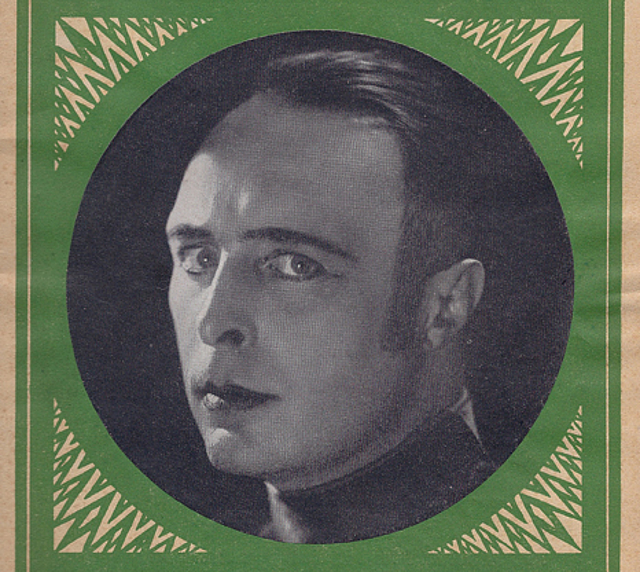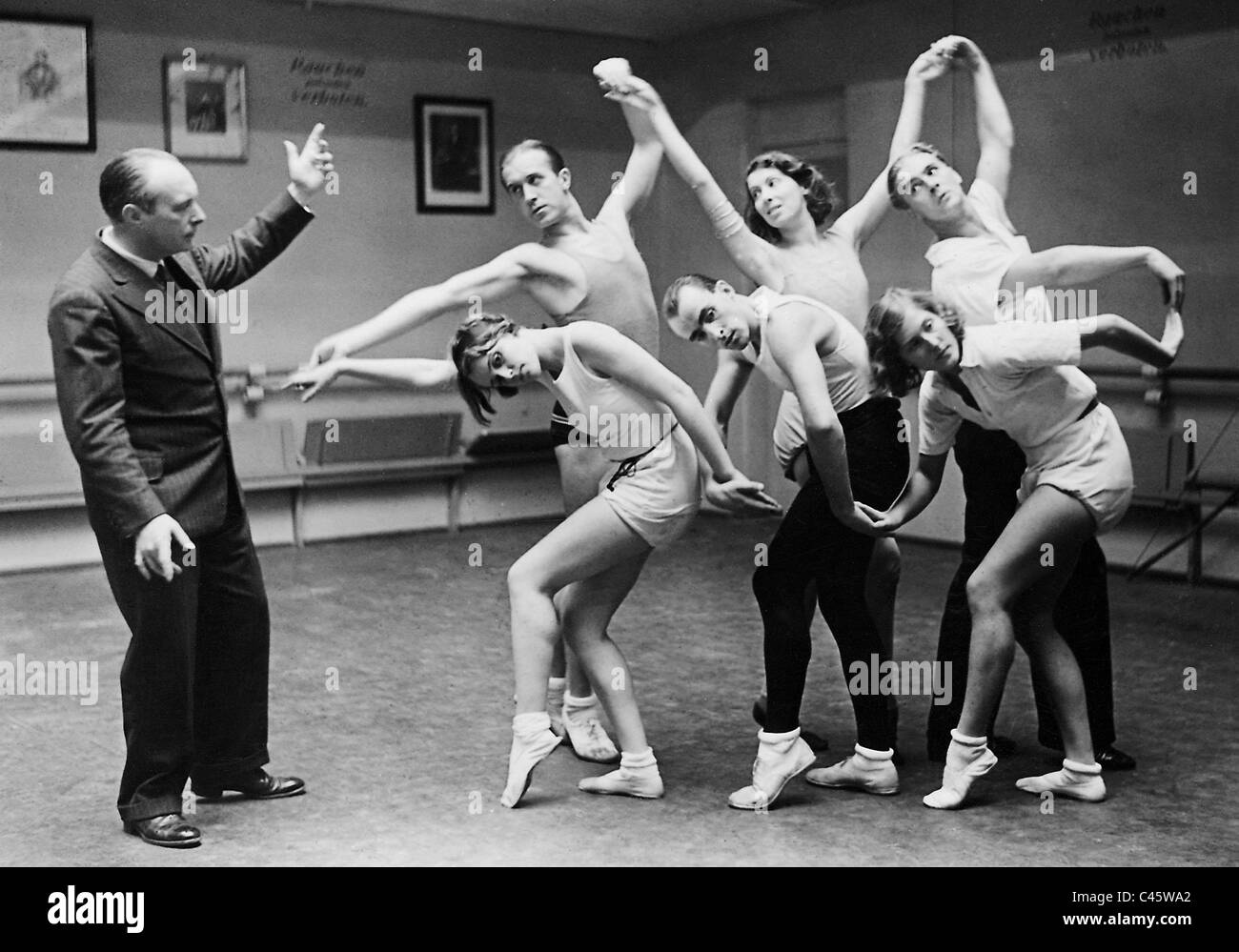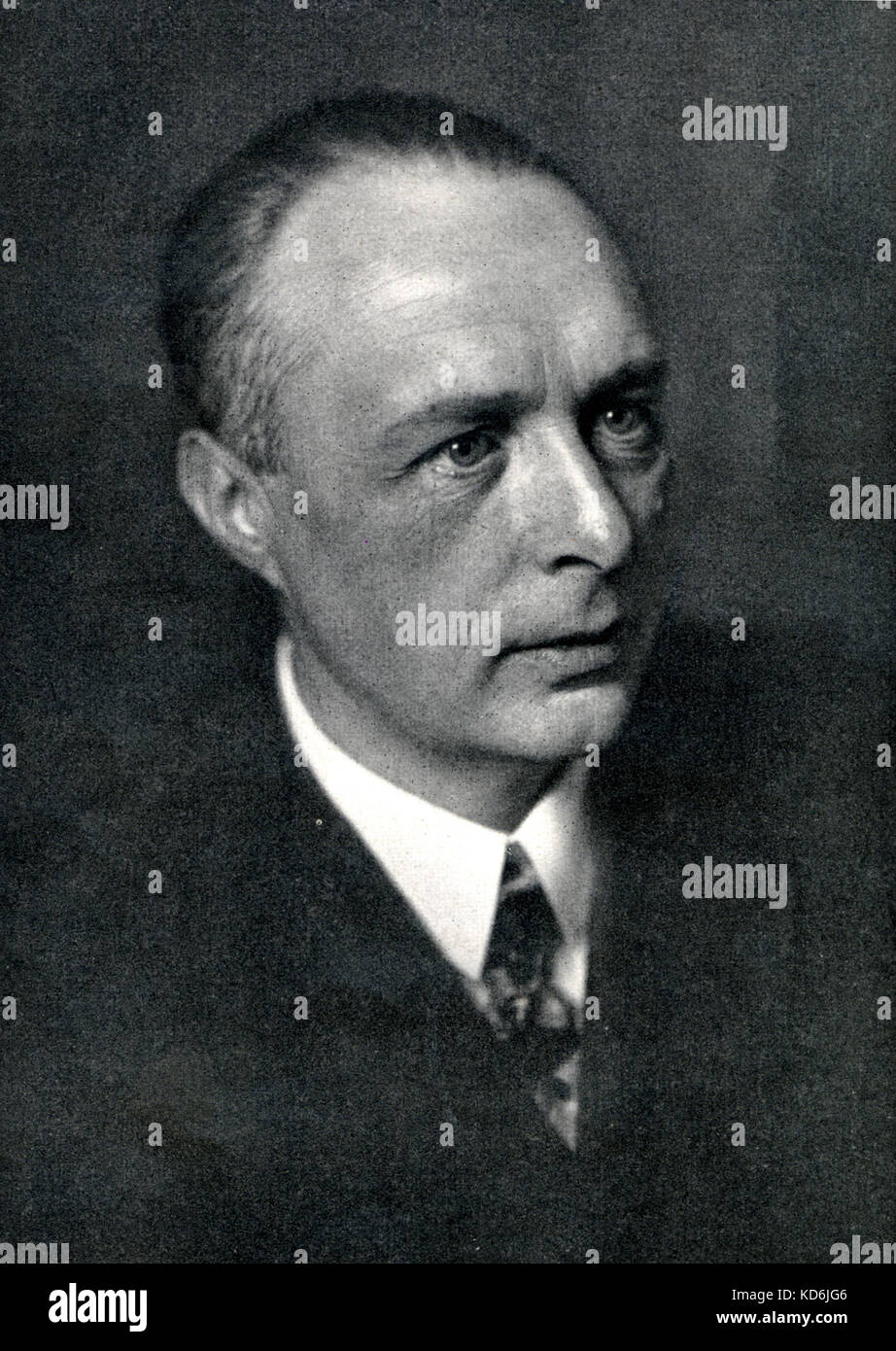
55 best images about Rudolph Laban & Laban Studies on Pinterest Public domain, Search and
The Art of Movement The kinetographic charms of Rudolf von Laban Christopher Turner Rudolf von Laban (right) and his dancers, Ascona, 1914. Photo Johann Adam Maisenbach. Courtesy Estate of Suzanne Perrottet.

Rudolf von Laban, Hungarian dancer, in costume. choreographer, ballet master and dance theorist
Rudolf (Jean-Baptiste Attila) Laban, also known as Rudolf Von Laban (December 15, 1879, - July 1, 1958) was a notable central European dance artist and theorist, whose work laid the foundations for Laban Movement Analysis, and other developments in the art of dance.

Rudolf von Laban, (1879 1958) Opera Slovakia
Rudolf von Laban Hungarian, 1879-1958 Exhibition Publication Wikipedia entry Exhibition Inventing Abstraction, 1910-1925 Dec 23, 2012- Apr 15, 2013 MoMA Publication Inventing Abstraction, 1910-1925: How a Radical Idea Changed Modern Art Leah Dickerman, 2012 Exhibition catalogue, Hardcover, 376 pages View the exhibition Licensing

Rudolf von Laban (Dance Artist) Bio Wiki Photos Videos
Rudolf von Laban, also known as Rudolf Laban , Following a rehearsal of choreography he had prepared for the 1936 Summer Olympics in Berlin, Laban was targeted by the Nazi party. He eventually found refuge in England in 1937. Between 1945 and 1946, he and his long-term partner Lisa Ullmann founded the Laban Art of Movement Guild in London, and The Art of Movement Studio in Manchester, where he.

Rudolf von Laban Deutsches Tanzarchiv Köln
Rudolf Laban (born Dec. 15, 1879, Bratislava, Austria-Hungary [now in Slovakia]—died July 1, 1958, Weybridge, Surrey, Eng.) dance theorist and teacher whose studies of human motion provided the intellectual foundations for the development of central European modern dance. Laban also developed Labanotation, a widely used movement-notation system.
Photograph of Rudolf von Laban as Mathematicus, ca. 19151918. In... Download Scientific Diagram
About the author (1980) Born in Slovakia, Rudolf Laban was the inventor of the dance-notation system. Laban is celebrated because of his unique dance-notation system, which not only conveys notions of shape and direction but also of movement and energy levels needed to perform the movements. Labanotation, or Kinetographic Laban, or Effort/Shape.

Le Corps Parlent Rudolf Von Laban
Labanotation (grammatically correct form "Labannotation" or "Laban notation" is uncommon) is a system for analyzing and recording human movement ( notation system ), invented by Austro-Hungarian choreographer and dancer Rudolf von Laban (1879-1958, a central figure in European modern dance), who developed his notation on movements in the 1920s.

Rudolf Laban, teorie della danza espressionista Storia della Danza
See Dörr, "Rudolf von Laban," Vol. 1, p. 401. † The Klingberg settlement on the Great Pönitzer Lake near Lübeck was founded in 1903 by Paul Zimmermann, the son of an industrialist who had instead taken up teaching. As a nationalistic, racist colony it attracted a reactionary bourgeoisie who, unlike the liberals, twisted Darwin's.

Anonyme Troupe de danseuses de Rudolf von Laban, Berlin, 1929 Vintage dance, Dance movement
A dance work by Laban performed in Magdeburg, Germany, in 1927. Photograph: Ullstein Bild/Getty Images. He added: "This difficulty could perhaps be overcome if one built a dome over the whole.

Rudolf von Laban Stock Photo Alamy
LABAN, Rudolf von 1879-1958PERSONAL: Born December 15, 1879, in Pozsony, Austria-Hungary (now Bratislava), Hungary; immigrated to England, 1938; died July 1, 1958. Education: Attended architecture school of École des Beaux Arts. Source for information on Laban, Rudolf von 1879-1958: Contemporary Authors dictionary.

Rudolf von Laban Stock Photo Alamy
Rudolf von Laban and Mary Wigman, followed by Kurt Jooss, Sigurd Leeder, Harald Kreutzberg and others, were key figures in early German modern dance. Although this group was pluralistic.

rudolfvonlabanpartition le geste professionnel
Laban is named after Rudolf Laban , who was a movement theorist, a choreographer and a dancer. He is considered a pioneer of modern dance. Laban categorized human movement into four component parts: Direction Weight Speed Flow Each of those parts has two elements: Direction is either direct or indirect. Weight is either heavy or light.

Rudolf von Laban with dancers during the rehearsal, 1930 Stock Photo Alamy
labanotation, system of recording human movement, originated by the Hungarian-born dance theorist Rudolf Laban. Labanotation grew from Laban's interest in movement, which stemmed from his early travels. He studied architecture and philosophy in Paris and worked as an illustrator before becoming involved in the performing arts.

Laban, Rudolf von Dancer, Dancing Theorist, Hungary *15.12.1879+ News Photo Getty Images
Rudolf von Laban was born in 1879 in Bratislava, in the former Austria-Hungary, into an aristocratic family. He continued to receive financial support from his mother during his economically adventurous artistic endeavours which brought him onto the verge of bankruptcy more than once. Taeuber-Arp was born in 1889 in Davos, Switzerland, into a.

Rudolf von Laban Danza
Rudolf Laban (1879-1958) was the son of a high ranking military figure in the Austro-Hungarian empire. He spent much of his time in Bosnia and Herzigovina, in the towns of Sarajevo and Mostar as well as the court circle in Vienna and the theatre life of Bratislava. He was educated in both western and eastern cultures.

Rudolf von Laban, Hungarian dancer, choreographer, ballet master and Stock Photo 163030118 Alamy
Rudolf von Laban (1879-1958) was born in Bratislava, Hungary and became a great dancer and teacher. His influence on dance is still seen today. Laban's teaching is at the root of modern dance, and his influence on the classical ballet world has been seen in the work of many choreographers.